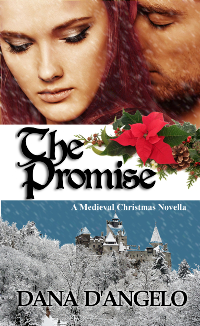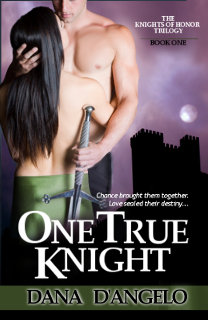Medieval Christmas Feasting by Dana D’Angelo
In my research for medieval Christmas traditions, I came across lots of information on holiday fare. I was tempted to use much of what I found in my new release The Promise, but fortunately or unfortunately my novella is about romance and not about food.
Still, I found the topic of medieval food interesting, and I wanted to share my discoveries with you, the readers at medievalromances.com.
In general Christmas back in the Middle Ages was different from how we observe it nowadays. One of the main differences, I believe, was that the people ate and celebrated for twelve consecutive days.
A lord usually gave his workers time off during the holidays, and sometimes, in a show of generosity, he would treat his underlings to a supper in the great hall. You see, throughout the year people were in a constant state of hunger. But when Christmas rolled around, they allowed themselves to indulge in food and drink.
The dishes and drink that these people enjoyed were based on what was available and what they could afford. However they made sure that there was plenty of food during this time.
Some of the more common and note worthy foods people enjoyed were:
- Baked Minced Pie – Minced pie was baked in an oblong shape to symbolize the crib that Jesus slept in. It consisted of shredded meat, fruit, and three spices (cinnamon, cloves and nutmeg) to represent the three gifts offered to Christ from the Magi. The people held a belief that a wish made on the first bite of the pie caused the wish to come true. However if a person refused that important first bite during Christmas, bad luck would follow him in the new year.
- Wassail – A powerful, hot drink that was made from a mixture of ale, honey and spices. The host served the drink from a large bowl. With friends present, he would cheerfully call out “waes hael” or “be well.” The friends, meanwhile, would reply with “drink hael” or “drink and be well.”
- Pudding or Frumenty – A favorite food during Christmas, frumenty essentially was a spicy porridge made from boiled wheat, currants, dried fruit, yolks, and spices such as cinnamon or nutmeg. The mixture was cooled and then allowed to set before it was served to the early awaiting guests.
- Golden Roasts – In noble homes, the cooks strived for artistry in their culinary creations. For example, to make a roasted peacock look visually appealing, they would add butter and saffron to paint the meat in a golden hue. When the peacock was finished cooking, they often redressed the gilded bird in its old skin and feathers.
- Boar’s Head – The boar’s head, with an apple or an orange in its mouth, was presented to guests with great excitement during an extravagant dinner. This rosemary and bay scented centerpiece was considered a noble dish.
A big thank you to Dana D’Angelo for this great guest post! You can read more about Dana on her author page here at Medieval Romances, as well as learn about the medieval romances she has written and where you can purchase them.



2 Responses to Medieval Christmas Feasting by Dana D’Angelo